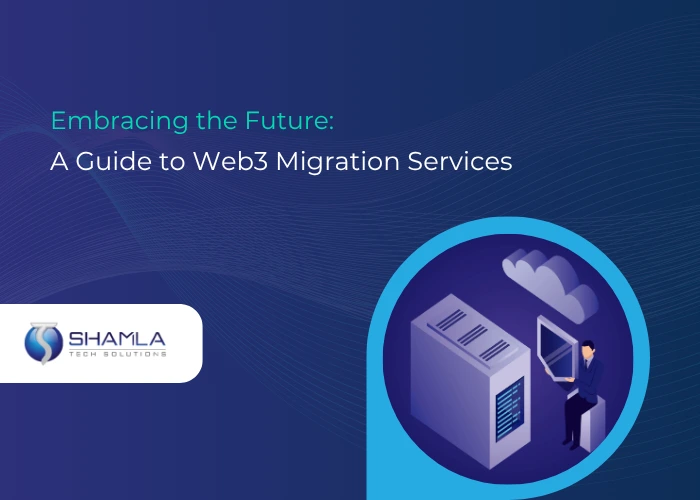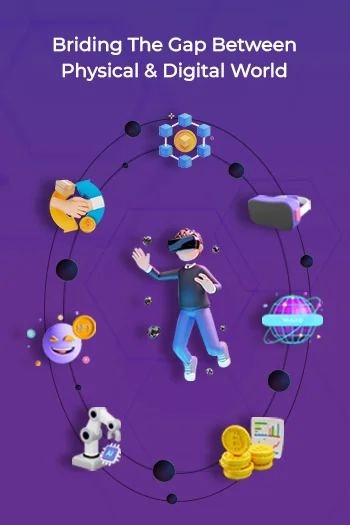Understanding Web3: The Next Internet
Web3 represents the third iteration of the internet. While Web1 was all about static websites and Web2 introduced interactivity and user-generated content, Web3 is taking it up a notch by decentralizing the web. This means that instead of a few tech giants holding all the keys, the power is distributed among users. It’s like going from a monarchy to a democracy. Sounds exciting, right?
In essence, Web3 is built on blockchain technology. A blockchain is a distributed ledger that records transactions across many computers, ensuring that the recorded data is immutable and transparent. This decentralization eliminates intermediaries, reducing costs and increasing the efficiency of transactions. Moreover, Web3 encompasses not just blockchain but also other technologies like decentralized finance (DeFi), non-fungible tokens (NFTs), and decentralized autonomous organizations (DAOs), all contributing to a more open and equitable internet.
The core philosophy of Web3 is to give control back to users. In the current Web2 environment, user data is stored and often exploited by large corporations for profit. Web3 aims to change this by allowing individuals to own and control their data and digital assets. This shift in control is not just theoretical but is actively being implemented across various platforms and applications, creating a more secure and user-centric internet.
Why Migrate to Web3?
There are loads of reasons to make the leap. First off, Web3 offers enhanced security. With blockchain technology at its core, your data is encrypted and less susceptible to breaches. Then there’s transparency. Transactions are traceable, reducing fraud and boosting trust. Plus, Web3 gives users more control over their data, offering privacy that was previously unimaginable. It’s like having a digital wallet where only you hold the key.
Beyond security and transparency, Web3 opens up a world of new opportunities for innovation and business models. For instance, smart contracts—self-executing contracts with the terms of the agreement written into code—automate and streamline processes, reducing the need for intermediaries and lowering transaction costs. This can lead to more efficient supply chains, quicker financial transactions, and innovative applications across industries.
Moreover, migrating to Web3 can future-proof your organization. As more businesses and users move towards decentralized platforms, those that cling to outdated systems risk being left behind. Embracing Web3 now positions you ahead of the curve, allowing you to leverage the latest technologies and tap into new markets. Additionally, with the rise of the metaverse—a collective virtual shared space—Web3 offers the building blocks for developing immersive digital experiences and virtual economies.
Key Features of Web3 Migration Services
Guidance and Planning: A good service will walk you through the migration process, from assessing your current digital presence to planning the transition steps.
Technical Expertise: They provide the know-how needed to integrate blockchain technologies with your existing systems.
Custom Solutions: Not all businesses are the same, so migration services often tailor solutions to fit your unique needs.
Support and Maintenance: Even after migration, ongoing support ensures that your Web3 presence remains robust and up-to-date.
Engaging a Web3 migration service means partnering with experts who understand the intricacies of blockchain technology and decentralized systems. These services offer a comprehensive suite of solutions designed to facilitate a seamless transition. They start by conducting a thorough analysis of your current infrastructure to identify areas that can benefit from decentralization. This assessment helps in crafting a strategic migration plan that aligns with your business goals and ensures minimal disruption.
Another critical feature of Web3 migration services is their ability to provide scalable solutions. Whether you’re a small startup or a large corporation, these services can tailor their offerings to meet your specific requirements. This scalability ensures that as your business grows, your Web3 infrastructure can expand to accommodate increased demand and complexity.
Furthermore, these services often include training and education for your team, equipping them with the knowledge and skills needed to navigate the new digital landscape. This empowers your organization to fully leverage Web3 technologies and maximize their potential benefits. Additionally, ongoing support and maintenance are crucial components of a successful migration, ensuring that your systems remain secure, efficient, and up-to-date with the latest advancements in blockchain technology.
Steps to Seamless Web3 Migration
You’re probably thinking, “This sounds great, but how do I actually do it?” Well, let’s break it down. The first step is conducting a thorough assessment of your current system to identify what needs changing. Next, you’ll want to map out a clear migration plan, outlining timelines and resource allocation. After that, it’s all about implementing the necessary blockchain technologies, testing everything to ensure it works, and finally, going live! It’s like moving to a new house—planning and execution are key.
The assessment phase involves evaluating your existing digital assets, data structures, and business processes. This analysis helps identify areas where Web3 technologies can enhance efficiency, security, and user experience. Once the assessment is complete, a detailed migration plan is developed, outlining the steps required to transition to a decentralized infrastructure. This plan includes timelines, resource allocation, and risk management strategies to ensure a smooth and successful migration.
Implementing blockchain technologies is the next crucial step. This involves integrating smart contracts, decentralized applications (dApps), and other blockchain-based solutions into your existing systems. Testing is an essential part of this process, as it ensures that all components function correctly and that the migration does not disrupt business operations. Rigorous testing helps identify any potential issues early on, allowing for timely resolutions and minimizing downtime.
Finally, once everything is in place and thoroughly tested, it’s time to go live. This involves transitioning your systems and users to the new Web3 infrastructure. It’s important to communicate effectively with all stakeholders throughout the process, ensuring they understand the changes and how to navigate the new environment. Post-migration support is also crucial, as it provides ongoing assistance and ensures that any issues are promptly addressed, allowing your business to fully capitalize on the benefits of Web3.
Challenges in Web3 Migration and How to Overcome Them
No transition is without its hurdles. The most common challenge is the steep learning curve. Blockchain and decentralized technologies can be complex, but remember, you’re not alone in this journey. Web3 migration services can simplify these complexities. Another issue is the initial cost. However, consider it an investment. The long-term benefits of enhanced security, privacy, and efficiency far outweigh the initial expenditure.
One of the primary challenges businesses face when migrating to Web3 is the lack of familiarity with blockchain technology. This unfamiliarity can lead to resistance from employees and stakeholders who are accustomed to traditional systems. To overcome this challenge, it’s essential to invest in education and training programs that empower your team with the knowledge and skills needed to navigate the new digital landscape. Web3 migration services often offer training sessions and workshops to facilitate this learning process.
Another challenge is the regulatory environment. As blockchain technology is relatively new, regulatory frameworks are still evolving. Businesses must navigate these regulations to ensure compliance while leveraging the benefits of decentralization. Engaging legal experts with experience in blockchain and cryptocurrency can help you understand and navigate the regulatory landscape, ensuring that your migration adheres to all relevant laws and regulations.
Additionally, the initial cost of migration can be a concern for some businesses. However, it’s important to view this as a strategic investment in the future of your organization. The long-term benefits of Web3, such as increased security, transparency, and efficiency, can lead to significant cost savings and revenue growth over time. By partnering with a reputable Web3 migration service, you can develop a cost-effective migration plan that maximizes the return on your investment.
Real-Life Examples of Successful Web3 Migrations
Let’s get the ball rolling with some success stories. Take Company X, for instance. They migrated to Web3 and saw a 30% increase in user engagement thanks to enhanced security features. Or consider Startup Y, which utilized Web3’s transparency to boost customer trust, resulting in a 50% increase in sales. These examples illustrate not just the potential benefits but also the transformative power of Web3.
Another notable example is a global supply chain company that leveraged Web3 technologies to streamline its operations and improve transparency. By implementing blockchain-based solutions, they were able to track the movement of goods in real-time, reducing delays and increasing efficiency. This transparency also enhanced trust among partners and customers, leading to stronger business relationships and increased customer loyalty.
In the financial sector, a prominent bank adopted Web3 technologies to enhance the security and efficiency of its transactions. By integrating blockchain solutions, they reduced processing times, minimized errors, and improved the overall customer experience. This migration not only saved the bank significant operational costs but also positioned them as a leader in digital banking innovation.
These success stories demonstrate the wide-ranging applications and benefits of Web3 across different industries. From improving supply chain transparency to enhancing financial transactions, Web3 technologies are transforming the way businesses operate and interact with their customers. By embracing Web3, organizations can unlock new opportunities for growth and innovation, positioning themselves as leaders in the digital economy.
Conclusion
In conclusion, Web3 migration services are your gateway to joining the internet’s new era. Whether you’re a business or an individual, embracing this transition can unlock unprecedented opportunities for security, transparency, and control. So, are you ready to take the plunge into Web3?
As you embark on your Web3 journey, remember that the transition is not just about adopting new technologies but also embracing a new mindset. Web3 represents a paradigm shift in how we interact with the digital world, prioritizing decentralization, privacy, and user empowerment. By embracing this shift, you position yourself and your organization at the forefront of the digital revolution, ready to seize the opportunities that lie ahead.
Shamla Tech, a leading Web3 development company, specializes in helping businesses like yours navigate this transformation with confidence. From strategic planning to seamless integration, Shamla Tech’s end-to-end Web3 migration services ensure a smooth transition into the decentralized future. Take the first step today and unlock the full potential of Web3 for your business—with Shamla Tech by your side.
Web3 migration made simple, secure, and scalable!
Partner with Shamla Tech and lead the digital revolution!




